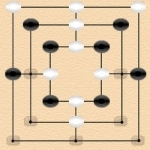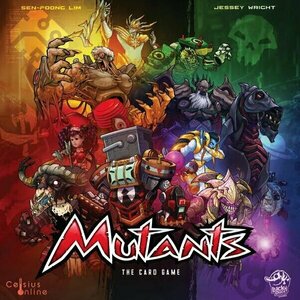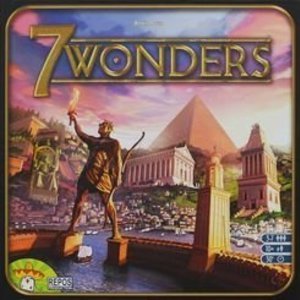
Blackbeard
Tabletop Game
BLACKBEARD recreates "The Golden Age of Piracy" at the turn of the 18th century. Each player becomes...
boardgames Pirategames HexGames
Purple Phoenix Games (2266 KP) rated YOHO (You Only Hang Once) in Tabletop Games
Jan 14, 2021
As mentioned previously, YOHO is a semi-cooperative game of pirate players attempting to find the Treasure and bury it in their safe spaces by the end of the game. Players will be assuming roles of jobs on a pirate ship: Captain, Quartermaster, Bosun, Seadog, and Pariah. These positions have jobs and pirating to do or else they may find themselves walking the plank.
DISCLAIMER: We were provided a copy of this game for the purposes of this review. This is a retail copy of the game, so what you see in these photos is exactly what would be received in your box. I do not intend to cover every single rule included in the rulebook, but will describe the overall game flow and major rule set so that our readers may get a sense of how the game plays. For more in depth rules, you may purchase a copy online or from your FLGS. -T
To setup players will choose their pirate persona and place it in front of them with the Loyal side showing. On the backside is the Rebel side, which will allow the player special abilities later in the game. A Captain is chosen and that player then doles out the remaining ranks of pirate jobs to the other players. Each player will be dealt five cards from the shuffled Blame deck (draw deck) for their starting hands. The top card from the deck is flipped to become the Blame Pile (discards). The Captain takes the Course card and places it Port side up. The game may now begin!
The active player’s turn will be comprised of four steps. The first step is refilling the hand to five cards. Should the player have more than five then no additional cards are drawn. Next the player will choose one card from hand to play to the Blame Pile. The card may not contain the same text as the card below it, so no stacking UNO Draw 2s. Once the card is played to the Blame Pile the active player will carry out the card’s instructions. These could be switching hands with other players, flipping their pirate cards to Rebel or vice versa to Loyal, Demoting pirate ranks, or one of the other four actions printed on the cards. Finally the active player passes the Course card to the next player to take their turn.
While this all seems typical of many card games, YOHO forks from the common by employing a Blame mechanic. One of the aforementioned other actions on cards is the Accuse action. When one player accuses another the Blame Pile is consulted, and whichever pirate’s rank number matches the highest sum of the matching rank number of cards in the Blame will take the entirety of the Blame Pile into their hand. For example, if the Bosun (3) accuses the Seadog (2) then the Blame Pile is sifted through in order to see how many cards match the 2 and 3 of the ranks involved. Add up the totals of these cards to arrive at the rank’s Blame. The larger number receives the Blame. Special rules are provided for when the Captain is both involved in an accusation and also when the Captain is forced to take the Blame.
The game ends once a pirate draws the last card from the Blame (draw) deck. Players will total their matching Blame in their hands, adjust this number if the player holds the Treasure card or if the pirate is Loyal vs. Rebel according to the Course card’s current display. The player with the most Blame will walk the plank and lose immediately. With a few other scoring rules the player still on board with the highest rank wins!
Components. This game is a deck of cards in a tuckbox. The cards are all fine quality with linen finish (the best finish methinks). The art is somewhat cartoony, but still enjoyable and not offensive at all. I don’t have any problems with the components in YOHO.
My first game of YOHO was played between my wife and I and it was a disaster. I strongly suggest playing with three or four, with four giving the best experience. When the full compliment is used there is only one “inactive” pirate who sits in the middle of the table holding onto their rank and not really doing anything. A ghost player, if you will. However, with two players there are three ghost players not doing anything. It just didn’t work with us AT ALL. But four players was quite enjoyable and actually saved this one for me.
I like the gameplay here. It is different and quirky, and I like that. The constantly-shifting ranks and demotions left and right makes players wish for promotions, but those only come as demotions to a higher rank. Also being able to accuse other players caters to the card counters in the group because they can be watching which cards are played to the Blame Pile and know exactly which rank has more cards represented. While that is dependent on the type of players involved, I have not found that to be a problem. I also really like the shifting Course card. When on Port all pirates can do their jobs, but as soon as it flips to Starboard the Rebel pirates may NOT complete their jobs. This is such an interesting way to utilize the active player token instead of just noting which player’s turn it is currently.
Again, I do NOT recommend playing with two, but definitely do recommend with four. I would be hesitant at three, but it can certainly work. Purple Phoenix Games gives this one a wishy-washy-swashbuckling 8 / 12. If your collection is missing another pirate card game that can be played quickly, has interesting twists, and fresh-feeling mechanics, give YOHO a try. You might finally have the chance to send your rival off the plank. But be warned, despite the title, there is no hanging in YOHO (You Only Hang Once).
Purple Phoenix Games (2266 KP) rated Fire in the Library in Tabletop Games
Feb 11, 2020
Fire in the Library is a push-your-luck card game that rewards players for pushing their luck well beyond their comfort zones… but as with all push-your-luck games, defeat is also imminent.
DISCLAIMER: We were provided a copy of this game for the purposes of this review. This is a retail copy of the game, so what you see in these photos is exactly what would be received in your box. I do not intend to cover every single rule included in the rulebook, but will describe the overall game flow and major rule set so that our readers may get a sense of how the game plays. For more in depth rules, you may purchase a copy online or from your FLGS. -T
To setup, each player will choose a player color, place their Libreeple (I think it’s Libreeple anyway) near the scoring track, and take the corresponding Player Reference Card. The Library will next be built from sequential Library Cards. The Library is a group of individual decks of cards arranged in a 2×2 pattern, and the card fronts create a lovely picture of the Library. Add all cubes of five different colors to the Library Bag (keeping aside 10 red “fire” cubes). Shuffle the Tool Cards deck, deal each player two Tool Cards, place the top three Tool Cards face-up next to its deck to form the Tool Card Market. Shuffle the Turn Order Cards per the player count rules in the rulebook, deal one to each player, and the game can begin!
Phase One of the game is Choosing Turn Order. Once the turn order has been established (just for the first round – after that, the player who is in last place will choose which Turn Order Card they would like to use for the round) the 1st Player will move onto Phase Two. Yes, Choosing Turn Order is an entire phase by itself. This becomes more important once I explain Tool Cards a little later.
Phase Two is the meat of the game. It is split into two sections, but they flow so nicely into each other. The active player consults their Turn Order Card to understand how many book cubes they would like to pull from the bag, thus “saving” them from the impending fire. The Turn Order Cards will have blank square spaces for “safe” areas, and spaces with fire icons in “risky” spaces. More points can be scored by placing cubes into the risky spaces, but also is more dangerous. You see, a player can pull out a red fire cube from the bag and still choose to continue to pull cubes, assuming the red cube is placed on a safe space on their card. But pull a second fire cube and their turn is immediately over. However, pulling just one red cube and having to place it in a risky space ends the turn immediately. A player can choose to stop pulling cubes at any time and earn the rewards on the Turn Order Card printed directly below the last cube placed as well as the points for each book saved, which are the large numbers printed on the Library Cards (the 2×2 grid with the picture of the Library). These rewards from the Turn Order Card could be merely a Tool Card (under safe spaces), or it could result in points on the scoreboard (under risky spaces). Even if a player busts with the red cubes, they will be able to take a Tool Card as consolation. If the active player did not bust and voluntarily stopped pulling cubes, they add their points for the turn and adjust their Libreeple accordingly. On the other hand, if a player had to end their turn due to pulling red fire cubes, then the fire spreads!
When the Fire Spreads all the books that the active player had thought they saved are burned (returned to the bag). These lost books will also cause the fire to burn down portions of the Library that match the colors of the cubes pulled. Remove the top cards for each of these cubes from the Library. Sometimes this will reveal a printed fire icon on the revealed Library cards. Every time a fire icon is revealed in this way, one of the red cubes that was set aside at setup will be added to the Library Bag – thus increasing the ratio of fire to safe books in the bag.
Phase Three is called “After Scoring.” Every Tool Card in the deck will have an icon printed to show when it can be played during a turn (check the Reference Card). The Tool Cards can be played during Choosing Turn Order, Saving Books, Fire Spreading, and After Scoring.
Once all players have had their turn for the round, a portion of the Library will burn. Remove the appropriate card (according to the rulebook). All players will have a chance to discard one of their Tool Cards and replace it with a Tool Card from the top of the deck. When complete, a new round begins. Play continues in this fashion until a section of the Library is revealed with an icon signifying the end of the game. Players will have one last round to earn as many points as— I mean, save as many books as they can.
Components. There’s a lot going on in this game, and the components are really really good. First, the game box is one of those awesome magnetic boxes (like Biblios) that unfolds and reveals the score tracker. The Libreeples are normal meeple fare, the cubes are normal cube fare, and the Library Bag is one that is loved by Guy Fieri (probably). The cards are great quality and feature really amazing artwork by Katie Khau and Beth Sobel. Overall, the components are wonderful and we really enjoyed playing with them.
As you can tell from our score, we genuinely enjoyed this game. The push-your-luck mechanic is so central to the game and the Tool Cards help to mitigate frustrating pulls, or help to manipulate other areas of the game, and we love both of those aspects. All in all, Fire in the Library is a truly enjoyable experience, and one that I find myself thinking about outside of game night. I cannot wait to play again, and hopefully save more books. I would suggest adding this to my workplace library’s board game collection, but I don’t want any students getting any great ideas… Purple Phoenix Games gives this one a hot hot hot 15 / 18. Check it out for a different take on push-your-luck, where you actually care about what you’re doing. Oh, and of course I won – I work in a college library.

Merrills / Mill
Games and Entertainment
App
*** IMPORTANT NOTE *** A new extened version of merrills is available for iPhone and iPad! Search...

iTouchStats Basketball
Sports and Entertainment
App
An extensive overhaul of the app is now complete, making a 4.5/5 star app even better! This upgrade...
Purple Phoenix Games (2266 KP) rated Mutants in Tabletop Games
Mar 11, 2022
Mutants is a crazy-themed deck building, hand management, fighting, card game for one to four players. Usually in this instance I would put together a Solo Chronicles review, but I wanted to first get the multiplayer rules down and then delve into solo. In any case, this game pits players against each other in a royal rumble where controlling mutants to fight one another most effectively and efficiently will earn the player riches galore. Come check out the world of Mutants.
To setup, well, there are many steps. The biggest and perhaps most confusing step is creating the decks of mutants that will be used by players throughout the game. I will recommend you follow the rulebook for drafting your team, or simply use one of the provided pre-constructed team suggestions. Otherwise, place the main board on the table, along with the power and scoring tokens for each player. Players choose their player board according to color chosen, take their starting deck, and divide their Advanced Mutant deck into three piles, with the top card flipped face-up. Players draw a hand of six Basic Mutant cards (one of each type initially) and the battle may begin!
Mutants is played over five rounds, tracked on the main board. Each round encompasses three phases: Crush the Competition, Move Active Mutant, and Take Action. As the game progresses, the power tokens for players will be moving up and down the Power Track. If, at the start of the current player’s turn, an opponent’s power token is located in one of the last three Power Track spaces (named the Dread Zone), and the current player’s token is on the Fury Space (furthest along the Track), then the current player will score immediate bonus points by Crushing the Competition.
The first turn will not utilize the Move Active Mutant phase, but on subsequent phases, this will need to be resolved. A player’s board consists of three main slots: Left Mutant, Active Mutant, and Right Mutant. Mutants may only enter the Active Mutant slot in the middle, so if a Mutant is currently placed in that slot, it will need to be moved either to the Left or Right slot, at the player’s discretion. Should all slots be filled, one of the Mutants will need to be moved off the board to make room for the new one. Once this happens, the Mutant’s Leave Ability (at the bottom of the Mutant’s card) will activate. This could give the player more Power, some Attacking abilities, or other unique abilities. Once a card leaves their slot and applies their Leave Ability, it is placed in the Discard space at the bottom of the player board.
Now that the Active Mutant slot is available, the current player may choose from one of the Take Action choices: Deploy Mutant, Breed, or Incubate. To Deploy Mutant, simply play a card from hand to the Active Mutant slot, activating the Deploy Ability once placed. These Deploy Abilities could range from cycling (draw a card from the deck and discard a card from the hand), gaining Power, or even reactionary abilities. Breeding Mutants requires the player to discard two cards from hand whose type icons match those of one of the face-up Advanced Mutant cards atop the player board. Discarding these cards allows the Advanced Mutant to enter play on the Active Mutant slot. Finally, the player may instead choose to Incubate an Advanced Mutant from one on offer by discarding one card (and it does NOT need to match icons) and placing the chosen Advanced Mutant on the Incubator slot on the left side of the board. These incubated Advanced Mutants will be placed atop the draw deck at the end of the round, so it will be drawn during the next round.
If at any time a player needs to draw a card from their draw deck and there are no cards remaining, they will first choose a card from their Discards to Freeze, by placing it in the appropriate Cryo Freezer on the right side of the player board. Frozen cards will be scored at game end, and can really boost a final score.
At the end of the round players will perform a few more tasks and setup for the next round. First, the Power Tokens are scored according to which is in first place along the Track and so on, using the red and black VP numbers printed on the main board. The round marker is advanced one level, and each Mutant in Incubation is moved to the players’ draw decks. Players then draw a new hand of six cards, and Power Tokens are reset according to the previous round’s placement, in reverse order. The player whose Power Token is now furthest behind will be the starting player for the next round.
Play continues in this fashion of moving Mutants around, taking actions, and jockeying for supremacy along the Power Track until the end of the fifth round. At that time, the final VPs are awarded for the Power Track placement, and all cards in the Cryo Freezer are tallied. The player with the most VP at the end of the game is the winner of Mutants!
Components. Okay, I have some thoughts here, and more than just, “oh hey, they are nice.” The game comes with a bevvy of cards, some wooden tokens, and a couple “boards.” I used quotations because only the main board is an actual board. The player boards are slick cardstock and, while functional, feel a little cheap. The cards themselves are all super great and the artwork is appropriate and quite excellent. I have a couple issues with some other components, however. The Power and Score Tokens are the only wooden components in the box and I just do not understand them. They look like Sauron/Spartan helmets, or someone who is crying because they just shoved a fork into the power outlet. Now, there are four of each type in different colors, and though the colors aren’t the primary colors we have grown to accept for our player colors, they have swapped out the green for purple, and I think the game is colorful enough to include more exciting colors. So I’m not a fan of the Power and Score Tokens. Similarly, I don’t really understand the insert that comes with the game. I see that it is setup to hold TONS of cards, and maybe there were/are plans for many many expansions, but the base game can be housed in two of the 14 total card slots provided. Also, I have no idea what is going on in the middle of the insert, but I also don’t own any of the expansions yet, so hopefully those molded spots are actually meant to hold something. Everything else, though, is great!
For me, art and components are very high on my list of items that affect how much I enjoy a game. Now, I can live with the wonky Power and Score Tokens, and I suppose I don’t mind carrying around a giant box of cards, when the game could ALMOST fit inside a box the size of Bohnanza or Point Salad or the like. That said, I have definitely enjoyed my plays of Mutants. The rulebook is a little daunting at first, mostly because the theme is unique and the game style is similarly different to me. Once the game gets into the thick of it, though, strategy and tactics take over so strongly. Each card is carefully considered for its usability as either a card to be played or discarded for varying effects. I love that about this game.
This is certainly more than a “deck builder,” even though deck building and hand management are at the forefront of the mechanics here. You aren’t necessarily building your deck and cycling through it quickly enough for me to consider this a true deck builder alone, but using each card for different purposes certainly increases the replayability with Mutants. When is the best time to freeze a card versus keeping it in the deck for its abilities? Do I move off the Left Mutant or keep it around for another turn? Why did I pick these Advanced Mutants during the draft, when I have crappy supporting cards? Every play of Mutants has been a wonderful challenge of maximizing my deck and choosing just the right opponents to attack with my monstrous creations. Purple Phoenix Games gives this one a horrifically delightful 5 / 6. I hate having to bling out my games, but I think I will probably try to find replacements for the Power and Score Tokens (though maybe a little spray paint will help?), and look into grabbing one or all of the expansions so that I may be able to fill up that confusing insert. I look forward to my next games of this, and to getting the word out on this little gem I finally tried.
Purple Phoenix Games (2266 KP) rated Top Pop in Tabletop Games
Jul 22, 2021
Top Pop is a 2-5 player (well, I would say 3-5) card game of market penetration and territory influence. In it, players are representatives of rival pop manufacturers bent on skyrocketing their company’s popularity in various major cities across the country. The winning rep is they who can diversify their influence and hit influential cities hard and often.
DISCLAIMER: We were provided a prototype copy of this game for the purposes of this review. These are preview copy components, and I do not know for sure if the final components will be any different from these shown. Also, it is not my intention to detail every rule in the game, as there are just too many. You are invited to download the rulebook, back the game through the Kickstarter campaign, or through any retailers stocking it after fulfillment. -T
To setup a game of Top Pop, refer to the rulebook to determine the starting resources per number of players. Each game is setup differently depending on how many players are involved. Shuffle the deck of city cards, and if using the optional City Power or Scenario variants, place these cards on the table for all to access as well. Each player chooses a color, receives the appropriate starting resources and the game is ready to begin!
On the active player’s turn, they will complete the following steps: Collect City Cards, Play a City Card, Take Caps, Place Stacks, and then Draw a Card. The first turn of the game Collect City Cards is skipped, but after that, each card the active player owns the largest stack of tops on they will collect. Caps that were stacked on the card are redistributed depending on where the card was placed (in front of the active player or a rival player). Next, the player will Play a City Card from their hand either in front of themselves or in front of a rival player. This is an important step to consider because once a card has been claimed then caps are distributed according to card placement, as referenced in the first step. Also noteworthy here is that if a card is placed in front of a rival, the active player takes one of said rival’s caps (Take Caps) from the bank of caps in the middle of table as well as a cap of the active player’s choice.
Now that the active player presumably has some caps with which to play, they Place Stacks on any City Card(s) they wish. The stacks of caps need to be the tallest stack on the card, must include a cap of the same color of the player who currently owns the highest stack, and must also be topped with a cap of the active player’s color. Any amount of caps may be added to a City Card in order to achieve these requirements, and the active player may place stacks on any number of City Cards in play. Once the active player has placed all caps they wish, they must then Draw a Card and prepare for their next turn.
As City Cards are played, caps placed out in stacks, and players winning bids on cards, players are jockeying for endgame points. The game ends after a player collects their sixth City Card and every other player has a chance to spend their remaining caps to claim cards. At the end of the game, points are awarded for having simple majority in each city as well as points for collecting a more diversified set of City Cards. The player with the most points scored at the end of the game wins!
Components. Again, this is a prototype copy of the game, so components are in no way final. Most notably, the final copies of Top Pop will include nice plastic stackable bottlecaps that look way better than the painted wooden discs (which for a prototype, are actually quite nice). The City Cards look and feel complete to me, and are pretty impressive. I like the art quite a bit and the game’s style is spot on. I am very excited to see how this one ends up, and I think gamers will love handling the finished bottlecaps.
There is a lot going on here that is hard to put into words. I played this solely three-player and included the City Powers with a few Scenarios (Kickstarter exclusives, I understand). I found the base game to be very good, but adding in those optional rules really makes it pop for me (I know you saw what I did there). Every player is constantly engaged throughout, and the tactical play always has me considering tons of options. I would not necessarily want to play this with extremely AP-prone players, but it is quick enough to include them as well from time to time.
What I like most about Top Pop, in addition to the overall aesthetic (even in the prototype), is the tactics in watching what other players are collecting, where the cards are placed, and cross-referencing all that with your personal bottlecap economy. There are just so many things to consider on each turn that makes me hungry for more and more plays. I say this a lot, but when I think about a game and ways I would attack it differently outside of the game session, that is a mark of a great game to me. And this one is a great game to me.
If you are looking for a uniquely-themed bidding card game with (promised) excellent components, I urge you to check out the Kickstarter campaign, which ends August 7, 2021. And on a personal note, I’m so excited to have both Chicago and New Orleans in this game. Two of my favorite cities in the world!

Cricket Captain 2015
Games and Sports
App
As the Australians arrive on the shores of England ahead of the 2015 series, Cricket Captain is...





